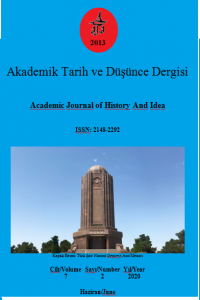Göbekli Tepe (Maden-İnanç Bağlamında) Toprak Ana İnancı
Kendisini var eden güç tarafından inanma güdüsüyle yaratılmış olan insan, bu güdünün tesiriyle yaratıcısını aramaya koyulmuştur. Varlık gününden bu güne değin devam eden bu arayış onu kutsala ulaştırmıştır. Lakin bu uzun ve sancılı yolculuk esnasında beşer, medet umduğu pek çok unsuru kendisine yaratıcı bilmiştir. Bu yanılgılı biliş onu defaten süreli ve suni tanrılara tapınmaya itmiştir. Nitekim o, doğası gereği pragmatiktir ve menfaatleri doğrultusunda hareket etmeyi yeğlemektedir. Bu bakış açısıyla yaşam yolunu şekillendiren insan doğayla girdiği çetin mücadele ortamında kendisine en çok yaşam hakkı tanıyan metalara tapınmaya başlamıştır. Bu doğrultuda insanoğlunun ilk tapındığı tanrının maden ya da maden kökenli olduğu düşünülmektedir. Dahası tanrısını var eden insan bir adım ötede tapındığı bu gücün kaynağını da sorgulamaya başlamıştır. Bu defa da madenlerin kökeni olarak gördüğü toprağı kutsallaştırmış ve onu tanrı boyutuna ulaştırmıştır. Bu serencam doğrultusunda insan çakmaktaşı ve kireçtaşı yönünden zengin bir plato üzerinde yer alan sahayı kutsamış, onu doğurgan bir tanrıçaya dönüştürmüş ve üzerine tapınaklar inşa ederek Göbekli Tepe tapınımını ortaya çıkarmıştır. Yorumlayıcı yaklaşım güdülerek ortaya koyulan bu çalışma ile maden yataklarının; Maden Tanrı’ya sonrasında Toprak Ana’ya ardılından Göbekli Tepe itikadına ve nihayetinde Bereket Tanrıçası’na evirilmesinin izleri takip edilmeye çalışılmıştır.
Göbekli Tepe (In the context of mine-faith) Mother Earth Believe
Man, who was created with the motive of believing by the power that created him, started to seek his creator with the influence of this motive. This search, which has continued from the day of existence to this day, has brought him to the sacred. However, during this long and painful journey, human beings were able to imagine many things that they had hoped. This delusional knowing has led him to worship the gods of time and again artificially. Indeed, he is pragmatic in nature and prefers to continue in his interests. With this point of view, the human who shaped the way of life started to worship the commodities that gave him the right to live in the difficult environment he entered with nature. Accordingly, it is thought that the first god worshiped by man was of metal or metal origin. Moreover, the man who created his god began to question the source of this power he worshiped one-step further. This time, he sanctified the land, which he saw as the origin of the mines, and made it the dimension of a god. In line with this result, the human consecrated the field located on a plateau rich in flint and limestone, turned it into a fertile goddess, and built temples on it and revealed the Göbekli Tepe worship. With this study, which was put forward with an interpretative approach, the mineral deposits; The traces of his transformation to the Mine God, later to Mother Earth, to the belief of Göbekli Tepe and finally to the Goddess of Fertility were tried to be followed.
___
- ÖZDOĞAN, M., “Neolitik Çağ-Neolitik Devrim-İlk Üretim Toplulukları Kavramlarının Değişimi ve Braıdwoodlar”, Türkiye Bilim Akademisi Arkeoloji Dergisi, S.7, Ankara 2004, s. 43-51.
- ÖZÜŞEN B. ve YILDIZ Z., “Buzul Çağı’ndan İlk Çağ’a Tüketim Tarihi”, Süleyman Demirel Üniversitesi Vizyoner Dergisi, C. 4. S. 7, Isparta 2012, s. 1-16.
- SCHMIDT, K., “Göbekli Tepe, Southeastern Turkey: A Preliminary Report on the 1995-1999 Excavations”, Paléorient, C. 26, S. 1, 2000, s. 45-54.
- SEPİCİ, L., Göbekli Tepe, Sınır Ötesi Yayınları, İstanbul 2013.
- TOOLEY, M., “Abortion and Infanticide”, Philosophy & Public Affairs, C. 2, S. 2, USA 1972, s. 37-65.
- YAVUZ, K., “Dini İnancın Gelişiminde Nativizm ve Tecrübecilik Problemi”, Atatürk Üniversitesi İlahiyat Fakültesi Dergisi, S. 7, Erzurum 1986, s. 129-142.
